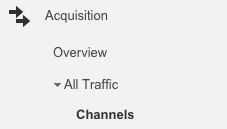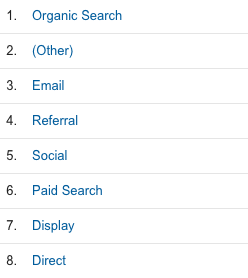Consumer research shows that one-time customers can become loyal brand fans as a result of interacting with a business on social media. As many as four out of five customers are more likely to choose a brand’s service or product after being exposed to them on social media. Unfortunately, as a recent survey showed, 70% of respondents feel that most brands’ presence on social media is based on a self-centered desire to increase profits rather than showing a commitment to their customers.
A few weeks ago, I wrote about what brand promotion practices your business should avoid on social media in order to get noticed. Now that you know what not to do, the next step is posting content that helps you meet your customers’ expectations, so your business can succeed both online and offline. Here’s our spam-free checklist to help you promote your business on social media.
How to promote your business on social media without being “spammy”
❑ Use the right social network
Are you reaching your target audience on social media? If your business is on LinkedIn but your brand offers products and services for teenagers, your message is not being heard. There is a three-step process to find out more about your audience and where they live on social.
❑ Find out your current channels’ demographics
❑ Find out which channels your desired audience frequents
❑ Either switch channels, focus more efforts on the right one, or use targeted ads to reach your desired audience on the same channel
You can use analytics tools such as Facebook Insights or Twitter Analytics to get to know your social media audience demographics. If you need to target a different group, you can do look for research that tells you more about which social channels are used by different age and gender groups—we found some to help you out.
❑ Take time to set up your social media profiles
Your customers can’t get to know your business if you don’t provide them with the right information. Your profile should be a one stop shop for customers to know the basic details: it should link to your business’s official website, and have appropriate branding on the cover and profile photos (think: if your customer were to plug your business’s name in the search bar, will a recognizable brand image pop up?). The About section or bio on your profile should have a concise, clear description of your main service or product, as well as contact information.
If you think your social media presence can use a makeover, we recently published a handy guide that details all the necessary steps in setting up profiles on all major social media networks.
❑ Cross-promote on all social channels
Now that you have set up a profile, and know where your target audience lives on social media, it’s time to let them know where your brand lives. First, list all your social media profiles in a prominent spot on your website. Visitors on your page should not have to look too hard to see how they can connect with your business. If your business has a blog, make sure you add a sharing button for each social network your brand uses. Finally, include regular messaging on your channels that alerts your followers on one network about the existence of your profiles on other networks—just remember to post in moderation, you don’t want your feed to consist of self-promotion posts.
❑ Find your social voice
I recently talked about the importance of having a distinct voice consistent throughout your social channels. Whatever tone you choose to adopt—whether it’s playful, funny, no-nonsense, or educational—the earlier you decide on your voice, the better the payoff for your brand image on social media. It doesn’t mean that you need to create a superficial persona for your customers—in fact, you should try your best to match their perceptions of your business offline. You should remember to be as polite and attentive to your customers as you would be in a face-to-face conversation, because your interactions on social media can be a deciding factor in the customer’s decision to come back or choose your competitor’s services instead.
❑ Share valuable content with your audience
Don’t sacrifice the quality of your content for your social voice—whether your social media content is funny or serious, it should always be informative and useful to your customers. If a potential customer visits your page and finds nothing but self-promoting messaging, they are less likely to browse or follow your profile; research shows that promotional material is seen as spam and often ignored on social media feeds. Since this is obviously the last thing you want happening, you want to provide value to your followers with your messaging.
If your business has a blog with industry news, it’s a great way to promote both your content and show your brand’s expertise in the field. If there is useful information coming from other sources, however, don’t hesitate to share it from your customers—even if someone else authored the advice, you are still the one who pointed them in the right direction.
❑ Encourage storytelling—and tell stories in return
Invite your customers to share anecdotes or photos related to your brand on social media. Your brand receives attention even if someone included an @mention of your brand without directly addressing you (i.e. starting the Tweet with it, or asking a question, for example), so make sure to join the conversation, whatever the tone of the comment may be.
Edelman’s “brandshare” report finds that two-thirds of surveyed customers found that their interaction with brands was one-sided: for example, they were encouraged to share a personal story as part of a promotional campaign, but the business itself never engaged in storytelling on social media. The absence of personal storytelling from your brand is not only unfair to your customers, it’s also a huge missed opportunity to show off your company culture. Social media presents your customers with a chance to get to know the people behind the business: you can give them a “behind the scenes” look at how your business finds inspiration to be great at what you do. This is a great opportunity to turn your customers into brand advocates by doing what you do best—your job.













